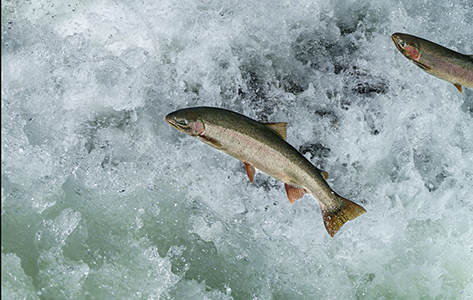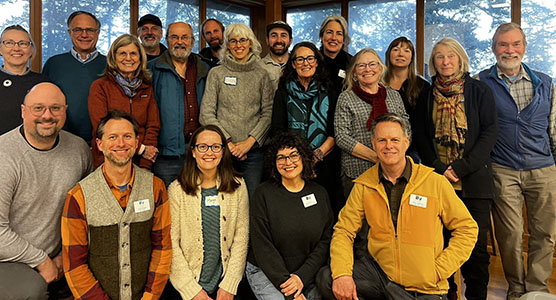— from The Center for Whale Research —

J40 and J14 without J55 – Photo by Dave Ellifrit, Center for Whale Research
“After an extended encounter with all members of J-pod on February 25, 2016, Center for Whale Research reluctantly announces that the newest member, designated J55, is missing and presumed dead,” said senior scientist Kenneth Balcomb.
J55 was first documented by NOAA Fisheries killer whale researchers on January 18, 2016, in Puget Sound. While exact maternity was never established, the calf was documented swimming in close proximity to both J14 (estimated to be 42 years old) and her daughter J37, a 15 year old mother of one (J49 born in 2012). It is also possible that J55 was the first offspring of J40, a 12 year old, and the youngest daughter of J14.
Prior to February 26, members of the federally endangered Southern Resident killer whales were last seen by Center for Whale Research (CWR) affiliates on January 19, 2016 when Mark Malleson encountered some members of J-pod in the Strait of Juan de Fuca and was able to photo-document fourteen of the whales (including members of the J14 matriline) despite the fact that the pod was widely dispersed across the strait and in less than optimal sea conditions.

J49 and J37 without J55 – Photo by Dave Ellifrit, Center for Whale Research
“While J55 was not photographed on that day, it is the Center for Whale Research’s policy to wait to announce the loss of an individual whale until a thorough survey of the entire pod can be undertaken, yesterday provided that opportunity,” said CWR Research Director, Dr. Deborah Giles.
“Although the loss of any calf is a blow to the Southern Resident killer whales and a setback to the struggling population, it is not entirely surprising that one of the ‘baby boom’ calves did not survive its first few months; as many as 50% of newborn calves do not survive their first year. Nevertheless, the loss of this calf underscores the need to recover the whales’ primary prey base – Chinook salmon – if the Southern Resident population of whales is to survive and thrive,” said Giles.
**If you are reading theOrcasonian for free, thank your fellow islanders. If you would like to support theOrcasonian CLICK HERE to set your modestly-priced, voluntary subscription. Otherwise, no worries; we’re happy to share with you.**








How sad! It was so exciting to have the new calves, and see pictures of J55.